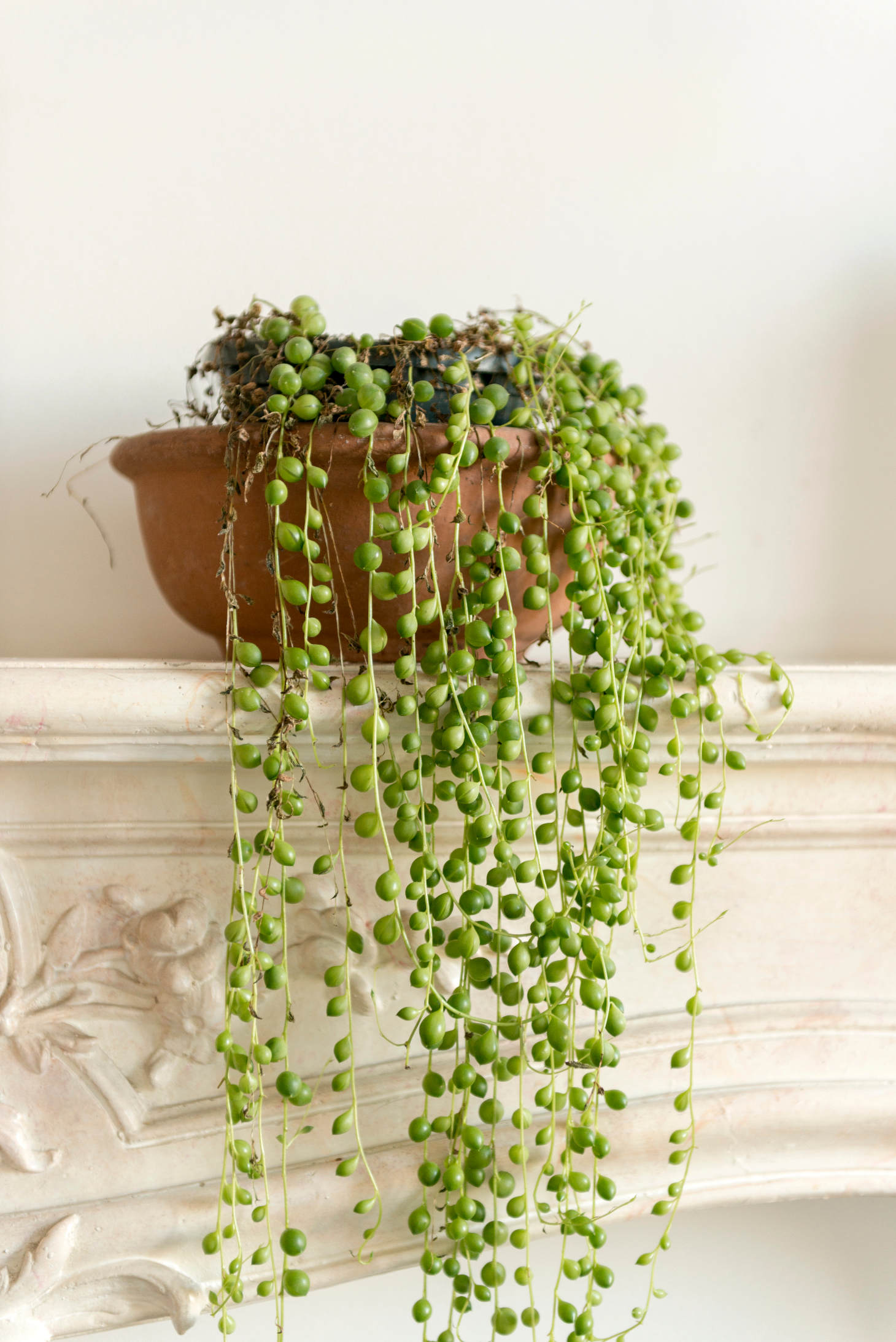String of Pearls Soil
String of pearls plants are unique succulents that need the right soil to thrive. These trailing beauties have small, pearl-like leaves that dangle from thin stems. They look great in hanging baskets or spilling over the edges of pots.
Your string of pearls will do best in well-draining, sandy soil like a succulent potting mix. You can buy a pre-made succulent or cactus soil, or make your own by mixing regular potting soil with coarse sand and perlite. The key is having a fast-draining mix that won’t stay wet for long. These plants hate having soggy roots.
To keep your string of pearls happy, use a pot with drainage holes and only water when the top inch of soil feels dry. With the right soil and care, you’ll have a lush cascade of pearls growing in no time. Your plant will reward you with its unique looks and low-maintenance nature.
Getting to Know the String of Pearls
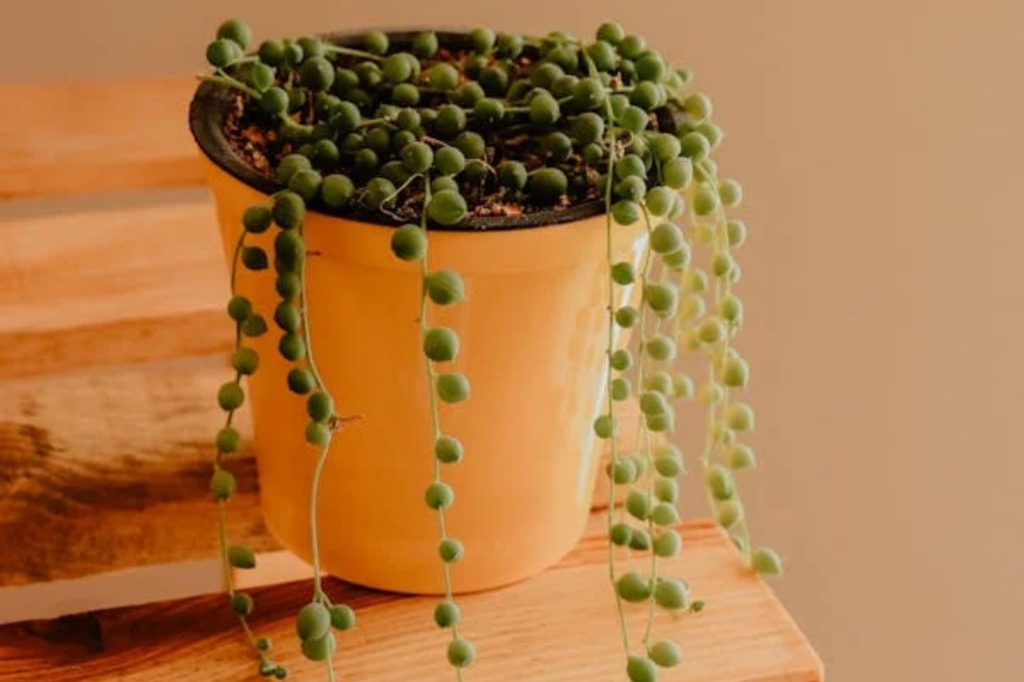
String of pearls is a unique succulent with round, bead-like leaves. It’s a popular houseplant known for its trailing stems and easy care.
Botanical Profile
String of pearls has two scientific names: Senecio rowleyanus and Curio rowleyanus. It belongs to the Asteraceae family, which includes daisies and sunflowers. This plant is native to South Africa, where it grows as a ground cover.
Interestingly, its pearl-like leaves function as water storage organs, which makes the plant highly drought-tolerant.
These “pearls” are about 1/4 inch wide and grow along thin, green stems. The stems can reach up to 3 feet long when mature.
String of pearls can bloom, producing small white flowers with a cinnamon-like scent. However, flowering is rare when grown indoors.
String of Pearls as a Houseplant
As a houseplant, string of pearls is prized for its unique appearance. You can grow it in hanging baskets or let it trail from high shelves. It’s best suited for bright, indirect light.
This plant is toxic to humans and pets if eaten. Keep it out of reach of children and animals.
String of pearls is drought-tolerant and needs well-draining soil. Overwatering is a common issue, so let the soil dry out between waterings. It prefers warm temperatures and moderate humidity.
With proper care, your string of pearls can grow quickly, adding a distinctive touch to your indoor garden.
Varieties and Relatives
String of pearls has several close relatives, all with similar care needs:
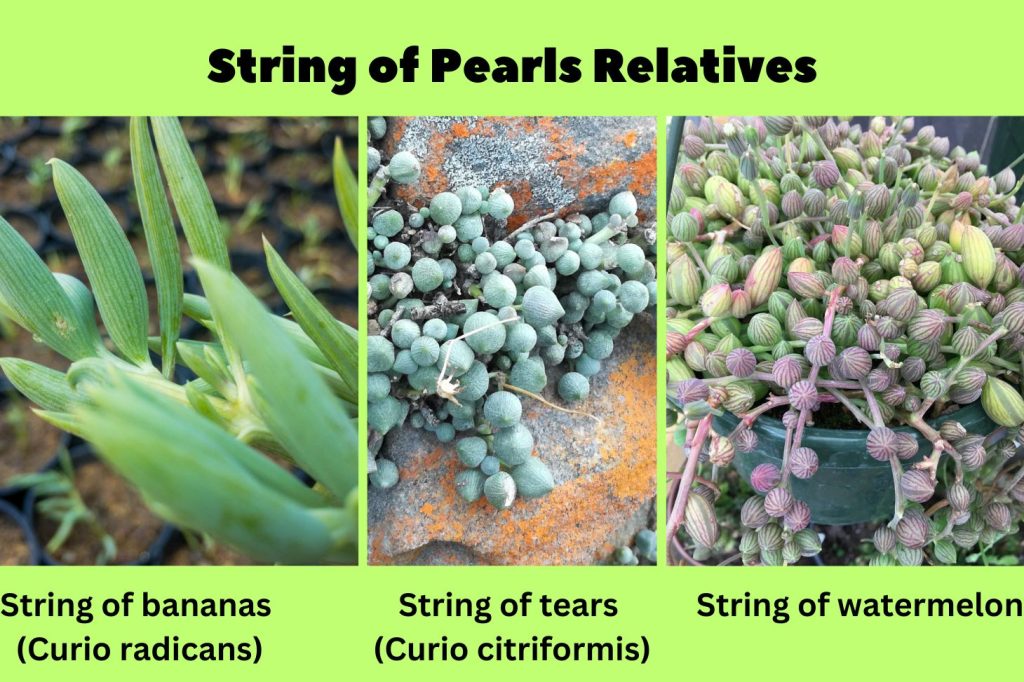
- String of bananas (Curio radicans): Has banana-shaped leaves
- String of tears (Curio citriformis): Features teardrop-shaped leaves
- String of watermelon: Has watermelon-shaped leaves
These plants are sometimes called “string of beads” as a group. They all make great hanging or trailing plants.
Some varieties of string of pearls have variegated leaves with white or yellow stripes. These types need more light to maintain their color.
You can mix different “string” plants in one pot for an interesting display. However, while many of these plants share similar care requirements, it’s crucial to ensure that the specific needs of each variety are compatible before combining them.
Ideal Growing Conditions
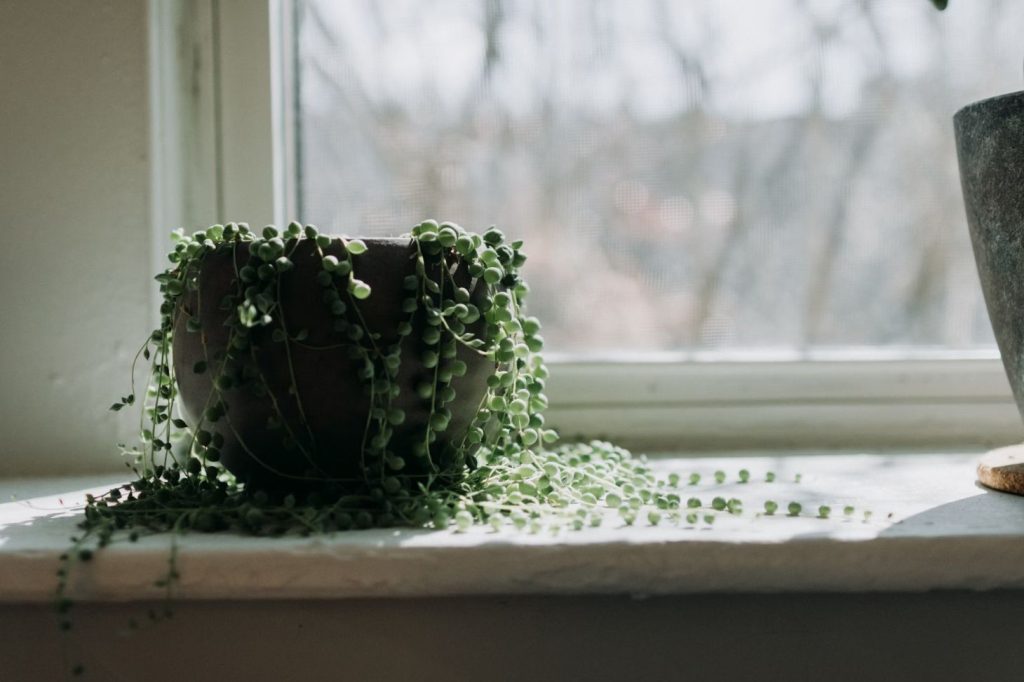
String of pearls plants need specific conditions to thrive. Here’s what you need to know about light, temperature, humidity, and soil to keep your plant happy and healthy.
Light and Placement
Your string of pearls likes bright, indirect light. Put it near a window that gets lots of sun, but not in direct sunlight. Too much sun can burn the leaves. If you notice the pearls getting smaller or the strings growing longer, your plant might need more light.
A spot that gets morning sun and afternoon shade is perfect. You can also use sheer curtains to filter strong sunlight. In winter, you might need to move your plant closer to a window to make sure it gets enough light.
Temperature and Humidity Essentials
String of pearls plants do best in warm temps between 60°F and 80°F. They can handle short cold spells, but long periods below 50°F can hurt them. Keep them away from cold drafts and air conditioners.
These plants like it dry. They prefer moderate humidity levels around 40-50%, so your regular indoor air is fine. Too much moisture in the air can cause rot. If your bathroom is steamy, it’s not a good spot for these plants.
Soil and Container Guide
The right soil is key for string of pearls. You need a mix that drains well to prevent root rot. A cactus or succulent mix works great. You can also make your own by mixing regular potting soil with sand or perlite.
While you can create your own potting mix, pre-mixed options offer convenience. Mixing your own requires purchasing several ingredients, often in larger quantities than needed, which can lead to waste and storage issues. Furthermore, achieving the correct ratio for optimal plant growth can be challenging.
Our ready-to-use succulent soil takes the guesswork out of the equation. It’s perfectly formulated for String of Pearls, ensuring optimal drainage and aeration. Skip the hassle and give your plant the best start. Try our succulent soil today!
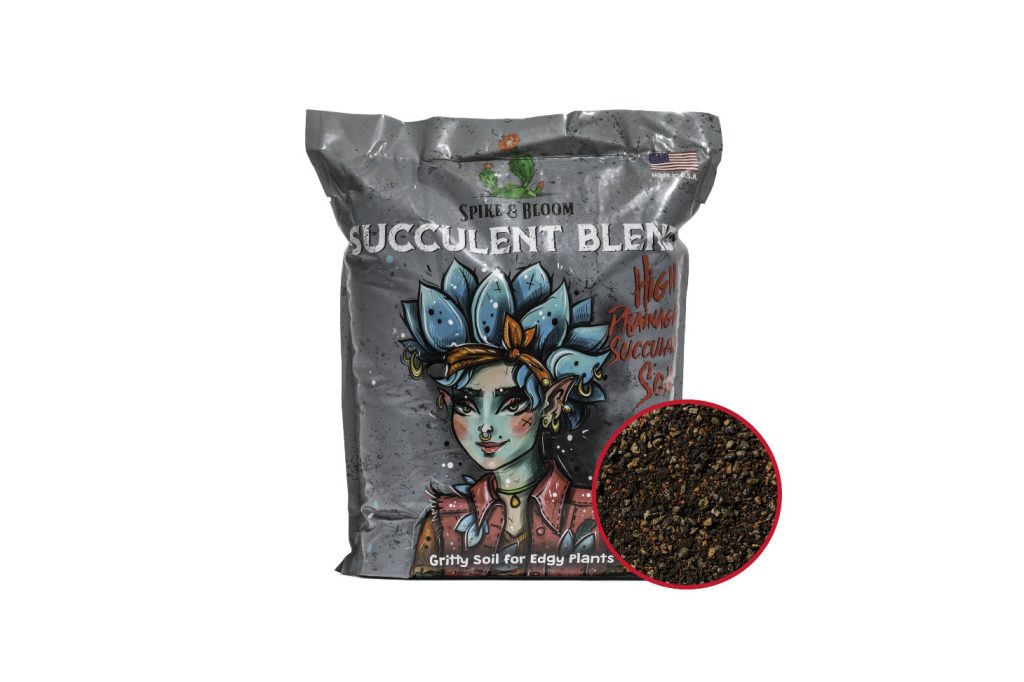
Your container needs drainage holes. Without them, water will sit in the soil and cause problems. Shallow pots work well because string of pearls has shallow roots.
Hanging baskets are a good choice. They let the strings hang down and show off the plant’s unique look. Just make sure the basket has holes for drainage.
The soil pH should be slightly acidic to neutral, around 6.0 to 7.0. Most commercial succulent mixes fall within this range, but it’s always a good idea to check the pH of your specific mix, especially if you’re mixing your own.
Planting and Daily Care
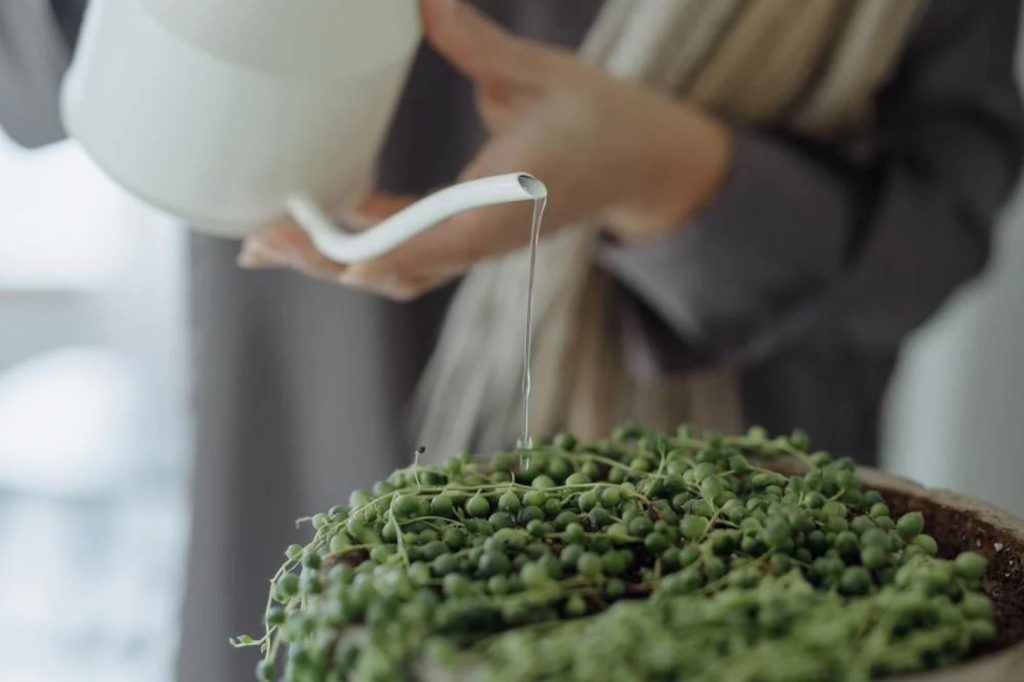
Growing string of pearls plants is fun and easy. With the right care, you’ll have a beautiful cascade of green beads in no time.
Watering Wisdom
Water your string of pearls sparingly. These plants are drought-resistant and hate wet feet. Let the soil dry out between waterings. In spring and summer, water once every 1-2 weeks. In fall and winter, cut back to once every 3-4 weeks.
To check if it’s time to water, stick your finger about an inch into the soil. If it feels dry, give your plant a drink. When you do water, soak the soil thoroughly until water drains from the bottom of the pot.
Overwatering is a big no-no. It can lead to root rot, which is often fatal for these plants. If you notice soft, mushy pearls or a foul smell, you might be dealing with root rot.
Feeding the Pearls
String of pearls don’t need much fertilizer. Feed them lightly during the growing season (spring and summer) with a balanced, water-soluble fertilizer diluted to half strength.
Apply fertilizer every two to four weeks during the growing season (spring and summer) and reduce or stop during winter dormancy.
Too much fertilizer can lead to nutrient burn and stress, causing the pearls to turn brown and crispy or lead to leggy growth. If you notice these signs, cut back on feeding.
Remember, it’s better to under-fertilize than over-fertilize these delicate plants.
Seasonal Care Tips
In spring and summer, your string of pearls will grow actively. This is the best time for propagation and repotting if needed.
Keep an eye out for pests like mealybugs or spider mites. If you spot any, treat with neem oil or insecticidal soap.
In fall and winter, your plant will enter a dormant phase. Move it to a cooler spot (around 55-60°F) if possible. Reduce watering and stop fertilizing.
Protect your plant from cold drafts and heating vents. These can cause the pearls to shrivel up.
If you live in a cold climate, bring your plant indoors for winter. String of pearls can’t handle frost.
Propagation and Repotting
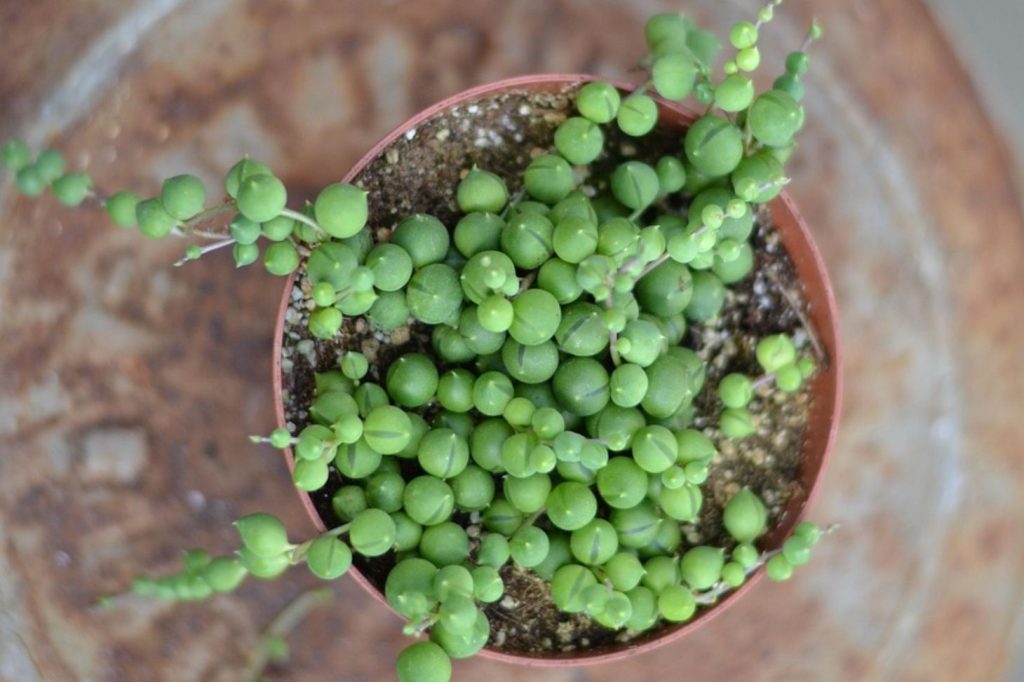
String of pearls plants can be easily grown and maintained through simple propagation and repotting techniques. These methods help create new plants and keep existing ones healthy.
Mastering Propagation
You can grow new string of pearls plants using stem cuttings. Take a healthy stem and snip off about 4 inches. Remove the pearls from the bottom inch of the stem.
You have two main options for propagation:
Soil method: Plant the cutting directly in succulent soil. Keep it slightly moist until roots form.
Water method: Place the cutting in a small container of water. Change the water at least once a week or every 3-5 days if it becomes murky, until roots appear.
Both methods work well, but soil propagation often leads to stronger roots. Once roots grow, plant your cutting in a small pot with well-draining soil.
Repotting Practices
Repot your string of pearls every 2-3 years or when it outgrows its current pot. Choose a container 1-2 inches larger than the old one. Make sure it has drainage holes.
Use a light, well-draining soil mix made for succulents. Don’t use regular garden soil – it’s too heavy.
To repot:
- Gently remove the plant from its old pot.
- Shake off excess soil from the roots.
- Place in the new pot and fill with soil, leaving 1 inch of space at the top.
- Don’t water for a few days to let any damaged roots heal.
Be extra careful when handling the delicate stems and spherical leaves during repotting. You might lose a few pearls, but that’s normal.
Troubleshooting Problems
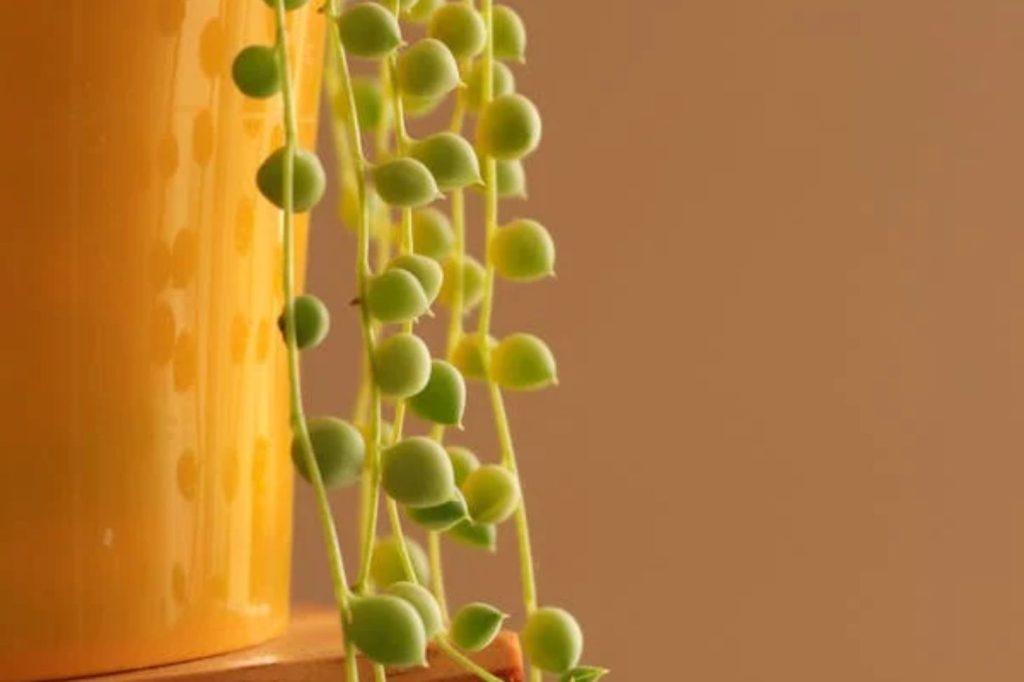
String of pearls plants can face some issues, but don’t worry! With a little know-how, you can keep your plant happy and healthy. Let’s look at common problems and how to fix them.
Common Pests and Diseases
Pests can bug your string of pearls. Keep an eye out for mealybugs, aphids, and gnats. These tiny invaders suck the life out of your plant. If you spot them, act fast!
Try wiping the leaves with rubbing alcohol on a cotton swab. This can zap mealybugs and aphids. For gnats, let the soil dry out more between waterings. Sticky traps can catch flying pests too.
Root rot is a sneaky disease. It happens when soil stays too wet. Your plant’s leaves might shrivel or fall off. If you suspect root rot, check the roots. Healthy roots are white and firm. Brown, mushy roots need to go.
Dealing With Environmental Stress
Your string of pearls can get stressed by its surroundings. Too much sun can scorch the pearls. Not enough light makes the stems stretch out.
Find a spot with bright, indirect light. A sunny window with a sheer curtain works great. If your plant looks pale or the pearls are small, it might need more light.
These plants are drought-tolerant, but they’re not invincible. Water when the top inch of soil feels dry. In winter, water less often.
Temperature matters too. String of pearls likes it warm, between 70-80°F. They can’t handle cold below 50°F. Keep them away from drafty windows in winter.

